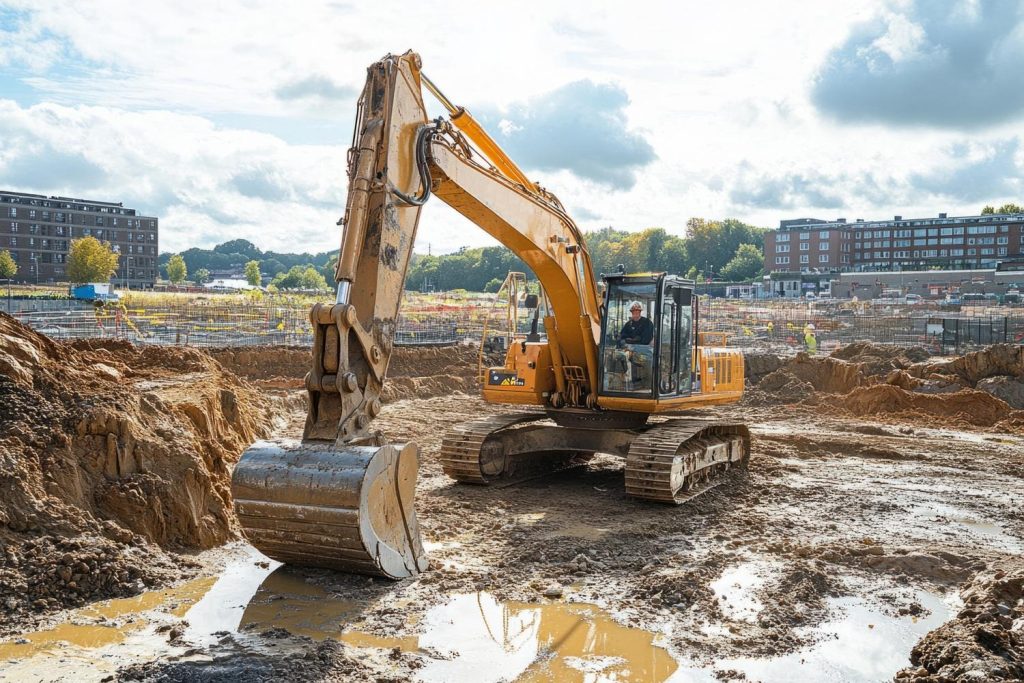When planning domestic groundworks — whether for a new build, an extension, or a full-site redevelopment — it’s essential to consider more than just excavation and foundation work. One of the most critical elements, often underestimated in early-stage planning, is the integration of core utility services: water, foul drainage, gas, and electricity.
When planning domestic groundworks — whether for a new build, an extension, or a full-site redevelopment — it’s essential to consider more than just excavation and foundation work. One of the most critical elements, often underestimated in early-stage planning, is the integration of core utility services: water, foul drainage, gas, and electricity.
Incorporating these connections during the groundwork phase — rather than retrofitting them later — ensures regulatory compliance, cost control, and a smoother construction process overall. This guide explores how to effectively plan for utility services as part of your groundwork strategy.

Why Utility Planning Should Start with Groundworks
Groundworks are not just about preparing the land — they are the framework for everything that follows. Mistakes made at this stage can be difficult and costly to fix later. When utilities are not accounted for from the beginning, projects risk running into delays, safety issues, or regulatory problems.
By integrating utility planning into the initial groundwork phase, you reduce the risk of:
- Redundant excavation or rework later in the project
- Conflicts between structural foundations and service routes
- Failed inspections due to non-compliant depths or installations
- Missed deadlines for connection appointments with service providers
Proper planning allows for clear coordination between trades and ensures that services are installed safely, efficiently, and in the right location.
Planning Service Routes: What to Include and How to Sequence It
Domestic sites typically require the following services:
- Fresh water supply
- Foul and surface water drainage
- Gas supply (where available)
- Electrical mains
- Telecoms or fibre-optic cabling
Each service comes with its own installation standards — including minimum trench depths, specific ducting types, colour codes, and separation distances from other services. These technical requirements need to be factored into both the design of the groundwork and the sequence in which services are installed.
For example, electrical and gas services should never share a trench without strict separation. Drainage requires consistent falls and inspection access points. Failing to allow space or access for even one of these can result in costly rework.
It’s equally important to coordinate with utility providers early. Most will require site drawings, trench specifications, and access to prepared routes before scheduling connections. Delays often stem from incomplete or incorrect groundwork preparation, which can set projects back by weeks.
Water and Drainage: Timing, Depth, and Compliance
Water services should enter the site from the boundary via a stop tap or meter, then route toward the property at a depth of at least 750 mm. The pipe should pass through an insulated duct at wall entry points, and sand bedding with marker tape must be used for protection and identification.
Foul drainage systems are gravity-based and must maintain a consistent slope to ensure proper flow. A typical fall of 1:40 is ideal, and inspection chambers are required at all junctions and direction changes. Materials and layouts must meet the requirements of Building Regulations Part H.
Surface water drainage, such as for rainwater or roof runoff, should not be connected to foul drains unless explicitly permitted. Depending on the site’s soil type and planning approvals, a soakaway system may be necessary. These systems must be located far enough from buildings and boundaries to function effectively and safely.
Gas and Electricity: Safety, Spacing, and Site Readiness
Gas and electrical installations are governed by strict safety rules and provider-specific standards. They require careful routing, proper protection, and access for future maintenance.
Gas installations typically require:
- A minimum trench depth of 600 mm
- Dedicated trenching (or strict separation if shared)
- Yellow MDPE pipe laid in soft sand with protective tape above
- Ventilated and sealed wall entries to avoid internal gas build-up
Electrical services typically require:
- Depths between 450–600 mm, depending on site conditions
- Red ducting or cable tiles for protection and identification
- Isolation from other services unless placed in compliant ducting
- Compliance with DNO (Distribution Network Operator) or ICP (Independent Connection Provider) guidelines
In both cases, proper spacing between services is crucial. Where routes cross, vertical separation is required. Groundworkers should always leave accessible entry routes for electricians and gas engineers to complete internal terminations.
Ducting and Sleeving: Building for the Future
One of the smartest steps during groundworks is the installation of spare or empty ducts for future service upgrades. This is particularly valuable for modern households that may later install:
- Electric vehicle charging points
- External lighting or power
- Fibre-optic broadband or security systems
Ducts should be colour-coded for easy identification, fitted with pull cords, and use gentle curves or swept bends to allow easy cable installation later. By future-proofing your site in this way, you avoid the disruption and cost of digging through finished landscaping or driveways in the years to come.
Explore xxbrits for online content.
Before Backfilling: Inspection and Documentation Are Critical
Once services are laid and before any trench is filled, it’s essential to confirm that installations meet the required standards. Most utility providers will ask for photographic evidence of trench depths, ducting placement, and protective measures. Building control officers may also carry out on-site inspections — particularly for foul and surface drainage systems.
Creating a permanent record of service locations is highly recommended. This may include:
- As-built drawings or layout sketches
- GPS coordinates or site measurements
- Photo documentation at key stages
These records are valuable for maintenance, future works, or when selling the property. They also reduce the risk of accidental damage during subsequent groundworks.
Summary: Integrating Utilities into Groundworks Pays Off Long-Term
Planning water, gas, and electrical connections as part of domestic groundworks isn’t just best practice — it’s essential for building efficiently, safely, and to code. Early coordination ensures that services are routed correctly, inspected promptly, and installed without delays or expensive revisions.
Treating utilities as a core element of the groundwork phase — rather than an afterthought — supports a smoother build process from the ground up. When these connections are integrated properly, they not only meet technical standards but also lay the foundation for a modern, flexible, and reliable home.
Source: https://megapersonals.co.com/






